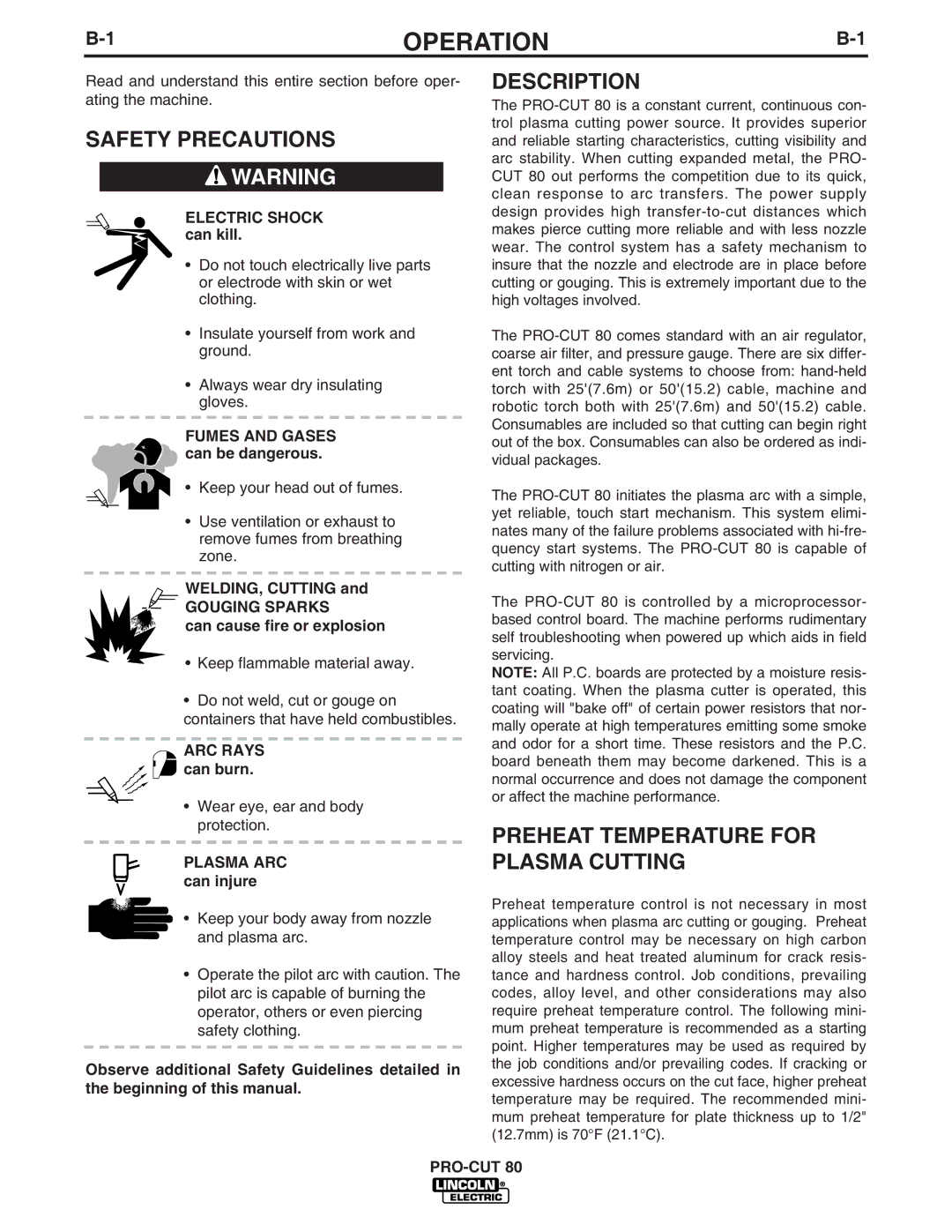
OPERATION | ||
|
|
|
Read and understand this entire section before oper- ating the machine.
SAFETY PRECAUTIONS
![]() WARNING
WARNING
ELECTRIC SHOCK can kill.
•Do not touch electrically live parts or electrode with skin or wet clothing.
•Insulate yourself from work and ground.
•Always wear dry insulating gloves.
FUMES AND GASES
 can be dangerous.
can be dangerous.
• Keep your head out of fumes.
•Use ventilation or exhaust to remove fumes from breathing zone.
WELDING, CUTTING and
GOUGING SPARKS
can cause fire or explosion
•Keep flammable material away.
•Do not weld, cut or gouge on containers that have held combustibles.
![]() ARC RAYS
ARC RAYS ![]()
![]()
![]() can burn.
can burn.
•Wear eye, ear and body protection.
PLASMA ARC can injure
•Keep your body away from nozzle and plasma arc.
•Operate the pilot arc with caution. The pilot arc is capable of burning the operator, others or even piercing safety clothing.
Observe additional Safety Guidelines detailed in the beginning of this manual.
DESCRIPTION
The
The
The
The
NOTE: All P.C. boards are protected by a moisture resis- tant coating. When the plasma cutter is operated, this coating will "bake off" of certain power resistors that nor- mally operate at high temperatures emitting some smoke and odor for a short time. These resistors and the P.C. board beneath them may become darkened. This is a normal occurrence and does not damage the component or affect the machine performance.
PREHEAT TEMPERATURE FOR PLASMA CUTTING
Preheat temperature control is not necessary in most applications when plasma arc cutting or gouging. Preheat temperature control may be necessary on high carbon alloy steels and heat treated aluminum for crack resis- tance and hardness control. Job conditions, prevailing codes, alloy level, and other considerations may also require preheat temperature control. The following mini- mum preheat temperature is recommended as a starting point. Higher temperatures may be used as required by the job conditions and/or prevailing codes. If cracking or excessive hardness occurs on the cut face, higher preheat temperature may be required. The recommended mini- mum preheat temperature for plate thickness up to 1/2" (12.7mm) is 70°F (21.1°C).
